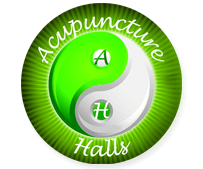
Chronic illnesses, long-term health conditions that often persist for months or even years, can be complex and difficult to diagnose and manage. Conditions such as fibromyalgia, chronic fatigue syndrome, Lyme disease, autoimmune disorders, and long COVID often involve a wide array of symptoms that may not be easily explained by conventional medical tests. In the quest for more accurate diagnostics and effective treatments, some practitioners have turned to alternative methods such as muscle testing, also known as applied kinesiology, as a complementary tool.
This article explores the role of muscle testing in the context of chronic illness, examining its methods, theories, potential benefits, and how it fits into an integrative healthcare model.
What Is Muscle Testing?
Muscle testing is a non-invasive diagnostic method that involves testing the strength or weakness of specific muscles to evaluate the body’s response to various stimuli. Developed in the 1960s by chiropractor Dr. George Goodheart, it forms the basis of Applied Kinesiology (AK).
Practitioners of muscle testing believe that the body’s muscles can reflect imbalances in physical, chemical, or emotional health. The technique typically involves the following steps:
- The practitioner applies pressure to a patient’s extended limb or specific muscle.
- The patient resists the pressure.
- Based on the muscle’s ability to resist, the practitioner interprets a strong or weak response.
In theory, a muscle that weakens under pressure may indicate stress or dysfunction in a related organ, system, or energy pathway.

How Is Muscle Testing Used in Chronic Illness?
Chronic illnesses often present with elusive symptoms such as fatigue, pain, brain fog, and digestive issues. Muscle testing is used by some alternative and integrative healthcare practitioners to:
1. Identify Underlying Causes
Muscle testing is believed to help uncover hidden stressors contributing to chronic illness, such as:
- Food sensitivities
- Heavy metal toxicity
- Microbial imbalances (yeast, parasites, bacteria)
- Emotional traumas or stress patterns
- Energetic imbalances in acupuncture meridians
2. Assess Supplement Compatibility
Practitioners may use muscle testing to determine how a patient’s body responds to specific supplements or medications, tailoring treatment to the individual’s needs.
3. Evaluate Treatment Progress
Over time, changes in muscle response may be interpreted as signs of healing or persistent dysfunction, guiding ongoing treatment strategies.
Theoretical Basis and Approaches
Several schools of thought and techniques have emerged under the muscle testing umbrella:
- Applied Kinesiology (AK): Combines chiropractic principles with muscle testing and is practiced primarily by licensed professionals.
- Touch for Health: A simplified version of AK, often taught to laypersons and holistic practitioners, focusing on balancing energy flow.
- Neuro Emotional Technique (NET): Addresses emotional contributors to physical symptoms by identifying and clearing unresolved emotional stress via muscle testing.
- Autonomic Response Testing (ART): Developed by Dr. Dietrich Klinghardt, ART combines muscle testing with biofeedback to detect disruptions in the body’s energy systems.
The Role of Muscle Testing in an Integrative Model
Muscle testing is popular among holistic and functional medicine practitioners. It is often used in conjunction with:
- Laboratory tests (bloodwork, stool analysis, hormone panels)
- Imaging studies
- Lifestyle and dietary evaluations
- Mind-body techniques (meditation, emotional release therapies)
In this model, muscle testing serves not as a standalone diagnostic tool but as a supplementary method to support individualized care, especially when conventional approaches have been exhausted.
Precautions and Considerations
If you are considering muscle testing as part of your chronic illness management:
- Work with trained professionals: Choose practitioners with formal training in applied kinesiology or related fields.
- Combine with medical care: Muscle testing should complement, not replace, conventional medical evaluations and treatments.
- Be skeptical of absolutes: No diagnostic method is infallible. Trust your intuition, but seek multiple opinions when needed.
- Observe outcomes: Use your health progress, not just test results, as a guide for whether a technique is beneficial.
Conclusion
Chronic illness often requires a multi-faceted and nuanced approach to healing. Muscle testing offers a unique lens through which practitioners attempt to uncover underlying causes and guide treatment. Its value may lie in its ability to foster a deeper connection between practitioner and patient, stimulate self-awareness, and personalize care. As with all healing modalities, discernment, open-mindedness, and integration with evidence-based practices are key.
Visit the Acupuncture Halls clinic in San Juan Capistrano, California, if you’d like to try muscle testing. You can obtain help for your health challenges and overall well-being from a registered medical practitioner. You can make an appointment by calling 949-510-6333 or using this form.
